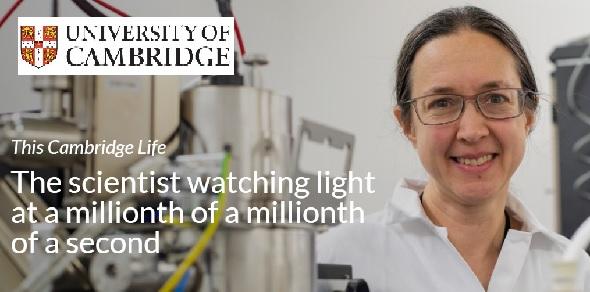
When she’s not making atomic-scale changes to create super-efficient light bulbs and cut carbon emissions, Professor Rachel Oliver has her sights set on helping to level-up equality and diversity in science. This Cambridge Life spoke with Professor Oliver on International Day of Women and Girls in Science (11 February).
This mindset of delving down to understand how things work has never left me. As an undergraduate at Oxford, I’d always thought I’d specialise in electrical engineering, designing circuits. But I realised that I wanted to go deeper and deeper in my understanding of materials and energy, right down to the atomic level.
Today I’m Professor of Materials Science and Director of the Cambridge Centre for Gallium Nitride. We specialise in understanding gallium nitride, which is a human-made semiconductor. We apply this material to a number of different projects to make energy, and working with power, more efficient.
The best-known application of gallium nitride is light emitting diodes (LEDs). LED technology is astoundingly commercially successful. Compared with the lightbulb of my childhood – the incandescent Edison style bulb – LED light bulbs cut the energy spent on lighting by a factor of five or six.
We’re not trying to reinvent LEDs but what we are trying to do is to make them as efficient and affordable as possible. This matters, because with millions of lightbulbs across the world, even the slightest increase in efficiency can have a monumental impact.
Lighting accounts for around 20% of the world’s energy supply, therefore even a 1% improvement in efficiency equates to tonnes and tonnes of CO2. In fact, we recently did a calculation based on one of the innovations we’d been working on and found that, if this modification could be applied across the board, you could shut down a medium-sized coal-fired power station overnight.

